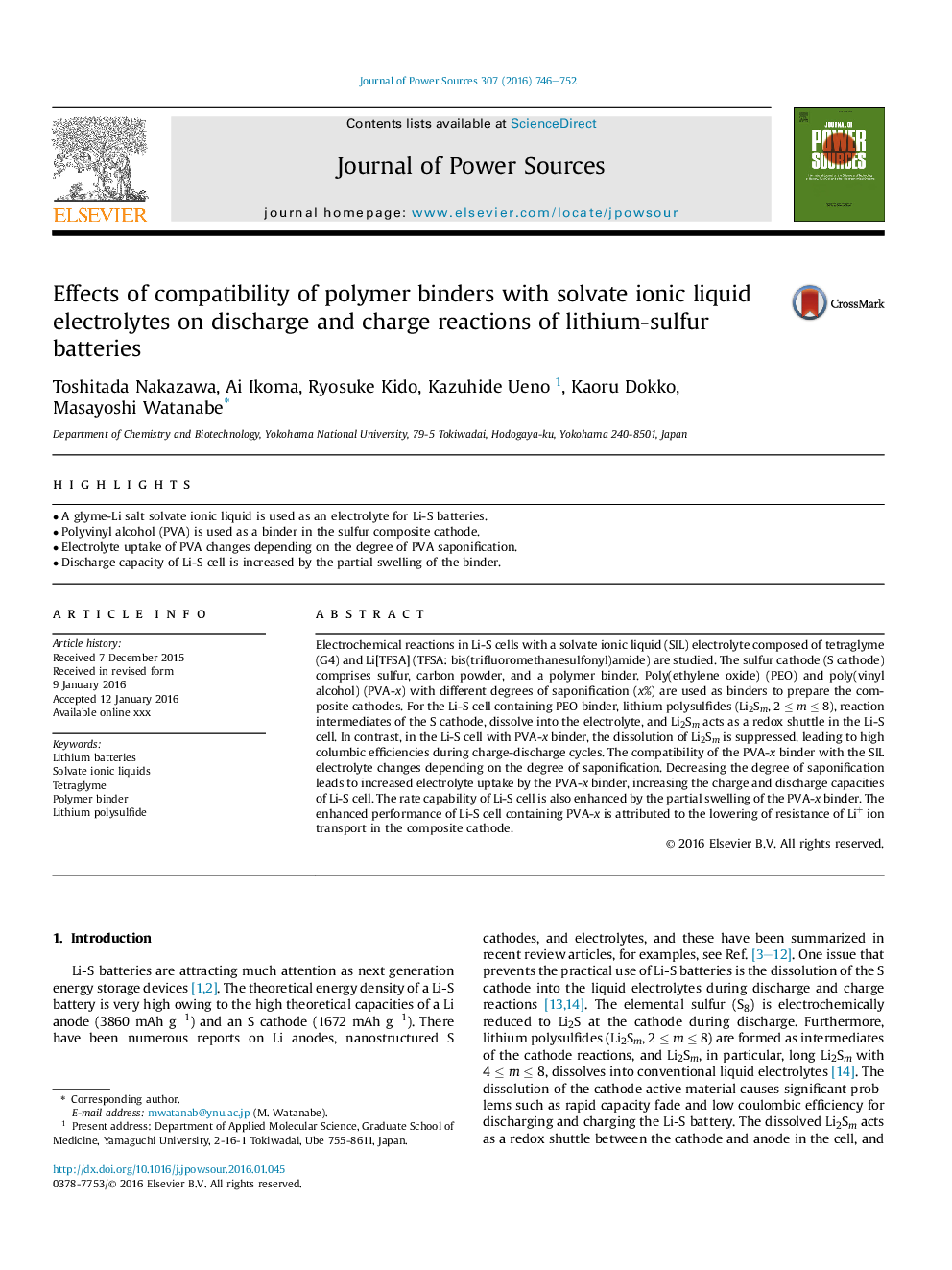| Article ID | Journal | Published Year | Pages | File Type |
|---|---|---|---|---|
| 7729448 | Journal of Power Sources | 2016 | 7 Pages |
Abstract
Electrochemical reactions in Li-S cells with a solvate ionic liquid (SIL) electrolyte composed of tetraglyme (G4) and Li[TFSA] (TFSA: bis(trifluoromethanesulfonyl)amide) are studied. The sulfur cathode (S cathode) comprises sulfur, carbon powder, and a polymer binder. Poly(ethylene oxide) (PEO) and poly(vinyl alcohol) (PVA-x) with different degrees of saponification (x%) are used as binders to prepare the composite cathodes. For the Li-S cell containing PEO binder, lithium polysulfides (Li2Sm, 2 â¤Â m â¤Â 8), reaction intermediates of the S cathode, dissolve into the electrolyte, and Li2Sm acts as a redox shuttle in the Li-S cell. In contrast, in the Li-S cell with PVA-x binder, the dissolution of Li2Sm is suppressed, leading to high columbic efficiencies during charge-discharge cycles. The compatibility of the PVA-x binder with the SIL electrolyte changes depending on the degree of saponification. Decreasing the degree of saponification leads to increased electrolyte uptake by the PVA-x binder, increasing the charge and discharge capacities of Li-S cell. The rate capability of Li-S cell is also enhanced by the partial swelling of the PVA-x binder. The enhanced performance of Li-S cell containing PVA-x is attributed to the lowering of resistance of Li+ ion transport in the composite cathode.
Related Topics
Physical Sciences and Engineering
Chemistry
Electrochemistry
Authors
Toshitada Nakazawa, Ai Ikoma, Ryosuke Kido, Kazuhide Ueno, Kaoru Dokko, Masayoshi Watanabe,
